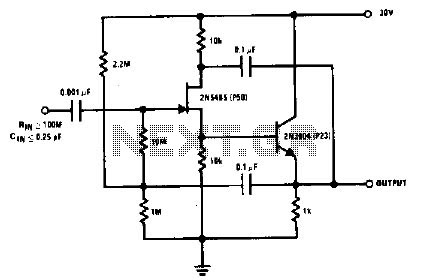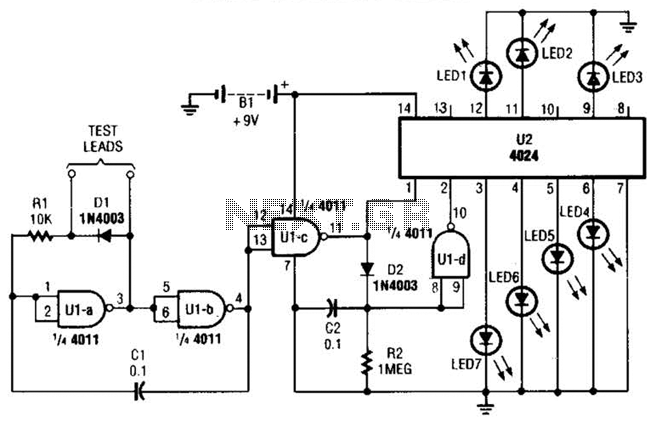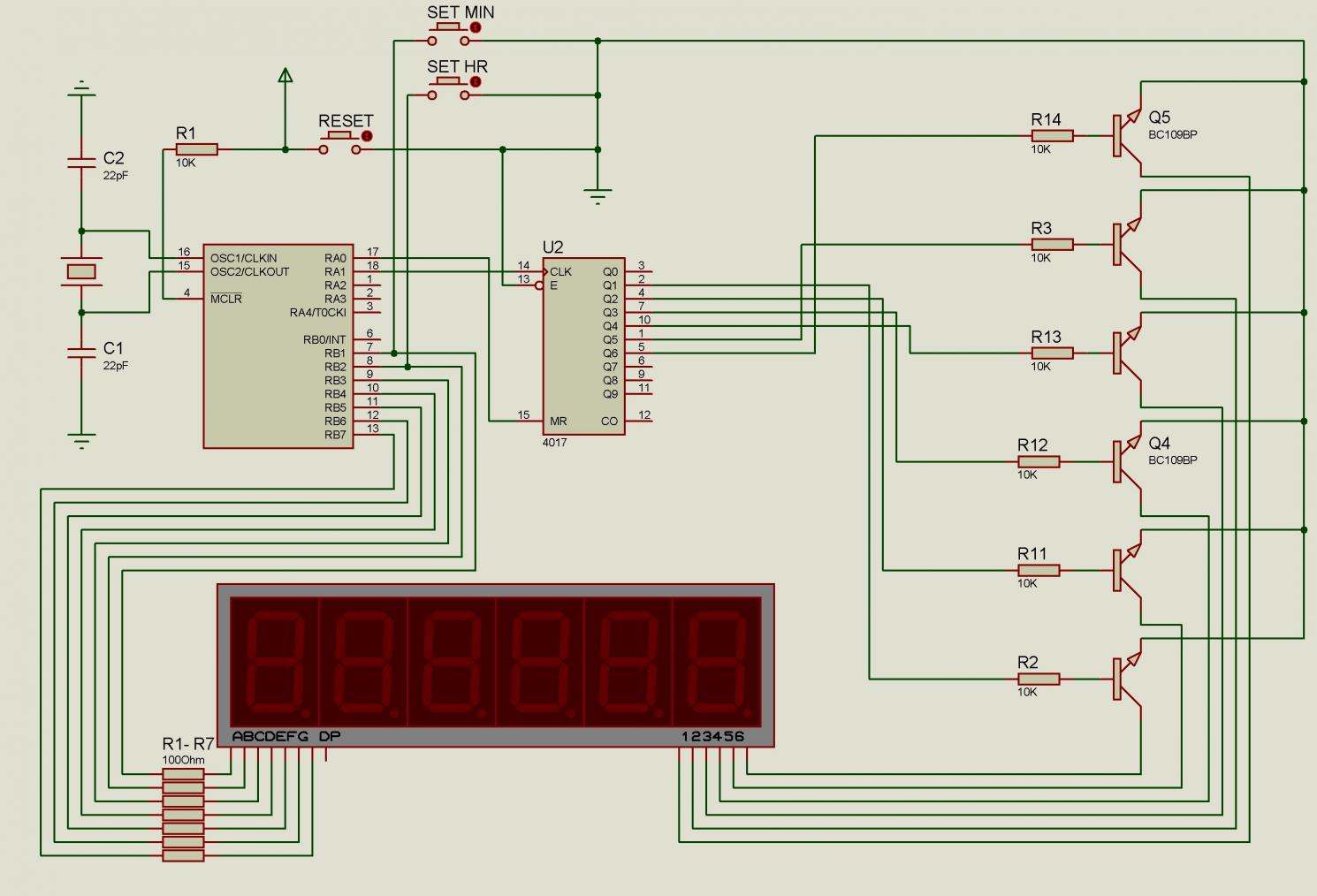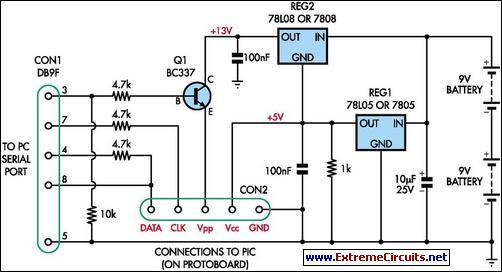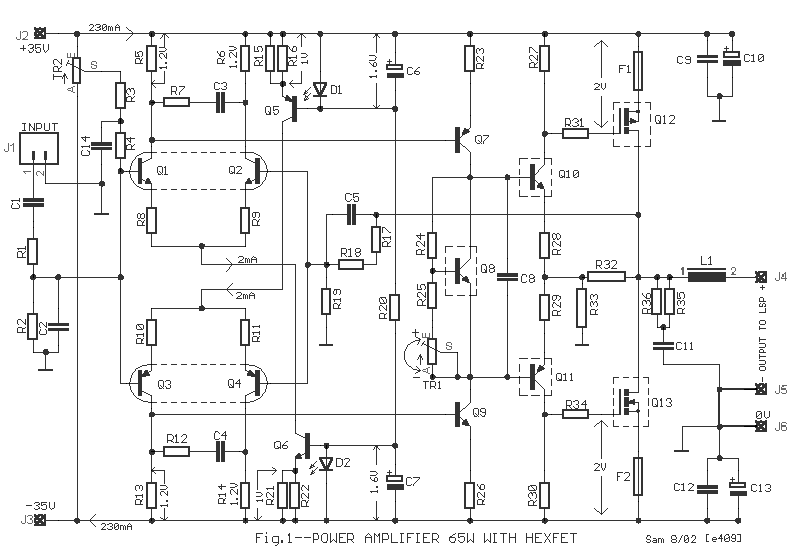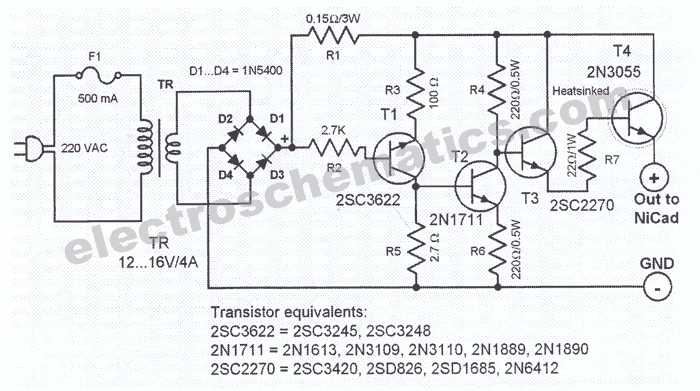
Bass man circuit
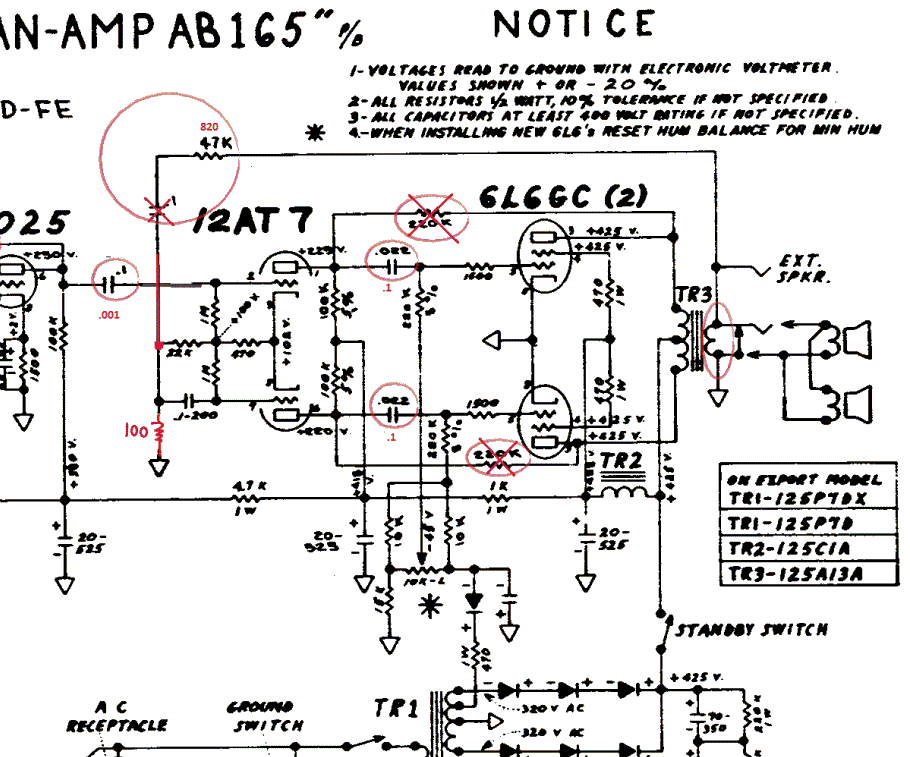
The Fender Bassman is a legendary guitar amplifier recognized by both guitar and bass players. Introduced in 1951, it was primarily aimed at bass guitar players and marketed as a bass amplifier for the Fender Precision Bass guitar, the first mass-produced electric bass guitar. Over different eras, the Bassman amplifier underwent numerous changes in design and configuration, making it one of the most varied models in terms of aesthetics and tonal characteristics. When discussing the Fender Bassman, it is essential to specify the exact era, model, and circuit configuration to avoid confusion. The tube charts are often misleading for identifying the circuit model; many blackface Bassman amps with AA864 tube charts are actually AA165 models, and numerous AA165 charts are found in AB165 amps. This discrepancy occurred because the Fender factory reused old tube charts for new models due to similar tube layouts. A more reliable method for determining production dates is by examining the serial numbers and transformer codes, along with a thorough inspection of the circuit. The Bassman was one of the first amplifiers modified by CBS after acquiring the company from Leo Fender, leading to immediate changes in the circuitry in 1965 when the AA165 and AB165 replaced the AA864. Collectors often prefer pre-CBS models; however, the AB165 circuit offers unique characteristics appealing to guitarists who favor cranked Fender blackface tones. The Bassman has never included reverb or tremolo effects. All models utilize a push-pull (class AB) dual 6L6GC power amplifier configuration. Up to the blonde Bassman, which features blonde tolex (circuit 6G6), tube rectifiers were standard, after which diode rectifiers were adopted. Initially, the Bassman was a combo amplifier during the tweed era, featuring 1x15” and 4x10” speaker configurations. From the blonde era onward, Fender produced the Bassman as an amplifier head with a 2x12” closed cabinet. The tonal characteristics of the blackface Bassman can be best described by comparing it to the traditional blackface AB763 amplifiers, such as the Super Reverb and Twin Reverb. The Bassman is noted for its simple, pure, and raw tone, delivering 50 watts of power, with power supply and output transformers comparable in size to those of the Super Reverb and Bandmaster. The bass channel of the AB165 and AA864 models is deeper and mellower than the normal channel of any AB763 amplifier, as it is specifically voiced for bass guitars. The bass channel also includes a deep switch that can attenuate the lowest frequencies, which is beneficial when playing at high volumes with various speaker cabinets. The normal channel is more relevant for guitar players, providing a browner tone compared to the AB763 amplifiers, particularly in the AB165 model, which exhibits increased preamp distortion and midrange presence at higher volumes. The AB763 amplifiers have less preamp gain due to the use of only one half of a triode (V4 12AX7) in the second gain stage, whereas the Bassman AB165 utilizes both halves of a triode (V2 12AX7). The normal channel in the AA864 Bassman is cleaner than in the AB165, as it lacks the additional gain stage. The Bassman amplifiers are characterized by a midrange presence that surpasses that of the AB763 amplifiers, and without the reverb effect, the Bassman produces a fuller, more direct, and less obscured tone. The Bassman circuit is simpler, containing fewer components and tubes than other AB763 amplifiers, resulting in fewer potential issues, reduced component drift, easier servicing, and minimized noise problems. Since its introduction, the Bassman has significantly influenced the entire guitar amplifier industry.
The Fender Bassman amplifier is a pivotal model in the evolution of guitar amplification, serving as a benchmark for both guitarists and bassists. Its design has led to a variety of iterations that cater to different player preferences and styles. The push-pull configuration utilizing dual 6L6GC tubes not only provides a robust output but also contributes to the amplifier's tonal richness. The absence of reverb and tremolo effects distinguishes it from many contemporaneous models, allowing for an unadulterated sound that appeals to purists.
The Bassman's tonal characteristics are further enhanced by its unique circuitry, particularly in the way it handles gain stages. The differences between the AA864, AA165, and AB165 models underscore the importance of understanding the amplifier's lineage. For example, the AB165's ability to produce a "browner" tone with more pronounced mids makes it a favorite among players who seek a distinctive sound that stands out in a mix.
The deep switch feature in the bass channel allows for greater versatility, enabling players to tailor their sound based on the context of their performance. This is particularly useful in live settings where different speaker cabinets may alter the tonal response.
In conclusion, the Fender Bassman amplifier is not just a tool for amplification; it is a cornerstone of music history that has shaped the sound of countless genres. Its combination of simplicity, reliability, and tonal depth continues to resonate with musicians, ensuring its legacy endures in the world of electric music.The Fender Bassmanis a legendary guitar amp known to both guitar and bass players. It wasintroduced in 1951, primarilytargeted for bass guitar players andpromoted asa bass ampfor the Fender Precision Bass guitar, the first mass-produced electric bass guitar ever. During the different eras the Bassmanampcame in many different shapes and configuratio ns. Few othermodelsexperiencedso many changesin terms of looks and tone. The next timeyou get intoa Fender Bassman discussion you shouldnarrow down exactwhich era, model and circuityou`re discussing. Otherwise it will justbe a fool`s discussion. The tube charts are not very useful for determining the circuit model. A lof of blackface Bassmanamps withAA864 tube charts are actually AA165 ²s, anda lot ofAA165 charts areglued into AB165 amps.
At the Fender factory they used old tube charts when new models came, probably because the tube layout was the same. Determining production date by serial number and transformer codes is better, and you should also inspect the circuit to be completly sure.
Unfortunately the Bassman was one of the first amps that CBS laid their hands on after buyingthe companyfrom Leo Fender. A couple of thingsin the circuitry were immediately changed in 1965 when the AA165 and AB165 replaced the AA864.
Amp collectors and idealists often prefer the pre-CBS models but if we study the AB165 circuit it does have something very interesting for guitar players who enjoy cranked Fender blackface tones. We`ll come back to this later in the blackface chapter below where we`lldemystify some of the hypeswith the popular AA864.
The AA165 is very rare and its circuit and tone is quite similar to the AA864. We will further focus mostly on the AB165 vs AA864. Some thingshave not changed since the beginning; The Bassman never had reverb or tremolo. All models have a push-pull (class AB) dual 6L6GCpower amp configuration. Up to the blonde Bassmanwith blonde colored tolex (circuit 6G6) they all hadtube rectifier, but since thenadiode rectifier was used. The bassman was a combo amp in the tweed era withthe 1G—15 ³ and 4G—10 ³ speaker configurations. From the blonde era Fendermade the Bassman as aamp head and 2G—12 ³ closed cabinet. Describing the blackface Bassman tone is best done withestablishing a common and well-knownreference point, forexample thetraditional blackface AB763 amps such as the Super Reverb andTwin Reverb.
The Bassmanis known for its simple, pure and raw tone. It is 50w loudwith power supply and output transformers sized approx. as the Super Reverb andBandmaster. The bass channel ofthe AB165 and AA864 is much mellower and deeper than the normal channel of any AB763 amps sinceit is voicedfor bass guitars. The Bassman bass channel featuresa deep switch that canremove thelowest frequencies, which is practical when you`re playing loudandusingdifferent speaker cabinets where you need to adjust the lower bass.
Thenormal channel is more relevant for guitar players. The Bassmansounds browner than the AB763-amps, particularly the AB165 model, and it hasmore preamp distortion andmidswhen the volume is turned up. The reason that the Ab763-amps have less preamp gainis the use of only one half/triode (V4 12ax7) in the second gain stage vs both halfs/triodes (V2 12ax7) in the the Bassman AB165.
The normal channel in the AA864 Bassman is cleaner than in the AB165 since it has no additional gain stage. The Bassman amps have more mids than the AB763-amps, and particularlywithout the reverb effect (the reverbs thinsthe tone)the Bassmanexperience is a fuller, directand less camouflaged tone.
The Bassman circuit is simpler andhas less components and tubes thanother AB763 amps. A less complicated circuit means fewer things that can go wrong, less component drift issues, easier to service andless potential for noise problems. The Bassman has significantly influencedthewhole guitar amp industrysince it was introduced. It`s 🔗 External reference
The Fender Bassman amplifier is a pivotal model in the evolution of guitar amplification, serving as a benchmark for both guitarists and bassists. Its design has led to a variety of iterations that cater to different player preferences and styles. The push-pull configuration utilizing dual 6L6GC tubes not only provides a robust output but also contributes to the amplifier's tonal richness. The absence of reverb and tremolo effects distinguishes it from many contemporaneous models, allowing for an unadulterated sound that appeals to purists.
The Bassman's tonal characteristics are further enhanced by its unique circuitry, particularly in the way it handles gain stages. The differences between the AA864, AA165, and AB165 models underscore the importance of understanding the amplifier's lineage. For example, the AB165's ability to produce a "browner" tone with more pronounced mids makes it a favorite among players who seek a distinctive sound that stands out in a mix.
The deep switch feature in the bass channel allows for greater versatility, enabling players to tailor their sound based on the context of their performance. This is particularly useful in live settings where different speaker cabinets may alter the tonal response.
In conclusion, the Fender Bassman amplifier is not just a tool for amplification; it is a cornerstone of music history that has shaped the sound of countless genres. Its combination of simplicity, reliability, and tonal depth continues to resonate with musicians, ensuring its legacy endures in the world of electric music.The Fender Bassmanis a legendary guitar amp known to both guitar and bass players. It wasintroduced in 1951, primarilytargeted for bass guitar players andpromoted asa bass ampfor the Fender Precision Bass guitar, the first mass-produced electric bass guitar ever. During the different eras the Bassmanampcame in many different shapes and configuratio ns. Few othermodelsexperiencedso many changesin terms of looks and tone. The next timeyou get intoa Fender Bassman discussion you shouldnarrow down exactwhich era, model and circuityou`re discussing. Otherwise it will justbe a fool`s discussion. The tube charts are not very useful for determining the circuit model. A lof of blackface Bassmanamps withAA864 tube charts are actually AA165 ²s, anda lot ofAA165 charts areglued into AB165 amps.
At the Fender factory they used old tube charts when new models came, probably because the tube layout was the same. Determining production date by serial number and transformer codes is better, and you should also inspect the circuit to be completly sure.
Unfortunately the Bassman was one of the first amps that CBS laid their hands on after buyingthe companyfrom Leo Fender. A couple of thingsin the circuitry were immediately changed in 1965 when the AA165 and AB165 replaced the AA864.
Amp collectors and idealists often prefer the pre-CBS models but if we study the AB165 circuit it does have something very interesting for guitar players who enjoy cranked Fender blackface tones. We`ll come back to this later in the blackface chapter below where we`lldemystify some of the hypeswith the popular AA864.
The AA165 is very rare and its circuit and tone is quite similar to the AA864. We will further focus mostly on the AB165 vs AA864. Some thingshave not changed since the beginning; The Bassman never had reverb or tremolo. All models have a push-pull (class AB) dual 6L6GCpower amp configuration. Up to the blonde Bassmanwith blonde colored tolex (circuit 6G6) they all hadtube rectifier, but since thenadiode rectifier was used. The bassman was a combo amp in the tweed era withthe 1G—15 ³ and 4G—10 ³ speaker configurations. From the blonde era Fendermade the Bassman as aamp head and 2G—12 ³ closed cabinet. Describing the blackface Bassman tone is best done withestablishing a common and well-knownreference point, forexample thetraditional blackface AB763 amps such as the Super Reverb andTwin Reverb.
The Bassmanis known for its simple, pure and raw tone. It is 50w loudwith power supply and output transformers sized approx. as the Super Reverb andBandmaster. The bass channel ofthe AB165 and AA864 is much mellower and deeper than the normal channel of any AB763 amps sinceit is voicedfor bass guitars. The Bassman bass channel featuresa deep switch that canremove thelowest frequencies, which is practical when you`re playing loudandusingdifferent speaker cabinets where you need to adjust the lower bass.
Thenormal channel is more relevant for guitar players. The Bassmansounds browner than the AB763-amps, particularly the AB165 model, and it hasmore preamp distortion andmidswhen the volume is turned up. The reason that the Ab763-amps have less preamp gainis the use of only one half/triode (V4 12ax7) in the second gain stage vs both halfs/triodes (V2 12ax7) in the the Bassman AB165.
The normal channel in the AA864 Bassman is cleaner than in the AB165 since it has no additional gain stage. The Bassman amps have more mids than the AB763-amps, and particularlywithout the reverb effect (the reverbs thinsthe tone)the Bassmanexperience is a fuller, directand less camouflaged tone.
The Bassman circuit is simpler andhas less components and tubes thanother AB763 amps. A less complicated circuit means fewer things that can go wrong, less component drift issues, easier to service andless potential for noise problems. The Bassman has significantly influencedthewhole guitar amp industrysince it was introduced. It`s 🔗 External reference
